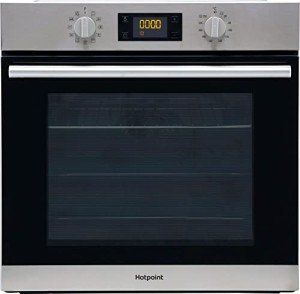Ovens have been a cornerstone of culinary endeavors for centuries, supplying an important home appliance for both amateur cooks and professional chefs alike. As modern-day kitchens progress, so too do the types of ovens available, each created to meet the varied requirements of cooking enthusiasts. The following guide supplies an in-depth introduction of different oven types, their features, and considerations to keep in mind when selecting the best oven for your kitchen.
When thinking about an oven for your kitchen, it is very important to comprehend the different types offered. Each type of oven has distinct attributes that can influence cooking approaches and overall kitchen performance.

Conventional ovens are one of the most fundamental type, typically found in homes all over the world. They usually use either gas or electric power and provide an uncomplicated cooking approach.
Stove are created with a built-in fan that flows hot air around the food, leading to much faster cooking times and more even results.
Wall ovens are a popular choice in contemporary kitchens, as they can be set up at eye level, conserving counter space and increasing availability.
Range ovens combine both a cooking range (with burners) and an oven, providing a compact option for cooking areas with limited area.
Steam ovens use steam instead of dry heat, protecting wetness and nutrients in food.
When picking an oven, consider the following functions that can boost cooking experiences:
| Feature | Description |
|---|---|
| Size | Ensure it fits your kitchen area and fulfills your cooking needs. |
| Self-Cleaning | Makes maintenance much easier, removing the requirement for manual scrubbing. |
| Smart Technology | Ovens with Wi-Fi connectivity can simplify cooking through apps. |
| Temperature level Range | A wider range can boost cooking flexibility. |
| Security Features | Functions such as vehicle shut-off can improve kitchen safety. |
Picking the ideal Oven For Kitchen can sometimes be a challenging task. Here are a number of pointers to simplify the procedure:
Identify Your Cooking Habits: Consider how often you cook and the kinds of meals you prepare. For example, avid bakers might choose a convection oven for even baking, while those who cook roasts may lean towards a standard oven.
Measure Your Space: Before purchasing, determine the location where the oven will be placed to guarantee it fits comfortably with your kitchen design.
Consider Your Budget: Ovens range extensively in price. It is necessary to set a budget and think about the long-lasting worth of the appliance.
Read Reviews: Online evaluations can offer insight into a model's performance and dependability in time.
Examine Energy Ratings: Energy-efficient designs can save you cash on utility costs in the long run.
To make the most of the life-span of your oven, correct upkeep is crucial. Follow these simple actions:
For small kitchen areas, wall ovens or compact range ovens are exceptional options as they take up less area and can be set up to suit offered kitchen cabinetry.
Frequently examine the burners for obstructions and guarantee that the oven's interior is cleaned to prevent accumulation from spills and splatters.
Yes, most modern ovens enable both functions. Check the user manual for specific guidelines on running your oven.
Initially, examine if it's correctly plugged in or if the gas is streaming. If concerns persist, seek advice from a technician to identify prospective problems.
If cooking convenience and the latest technology appeal to you, investing in a wise oven can be rewarding, as they provide a series of improved cooking functions.
Choosing the ideal oven for your kitchen is important to both the functionality and enjoyment of your cooking experience. By considering the numerous kinds of ovens, vital functions, and upkeep pointers, customers can make an educated decision that satisfies their cooking requirements and preferences. Whether you are a casual cook or an enthusiast, the right oven can considerably elevate your culinary adventures.

No Data Found!

